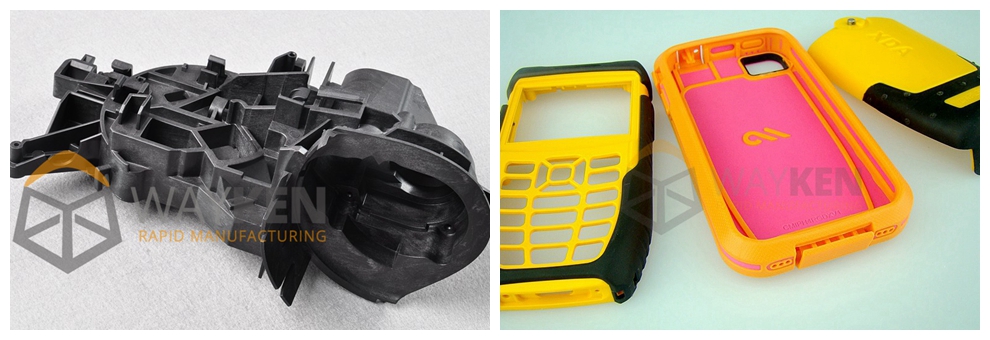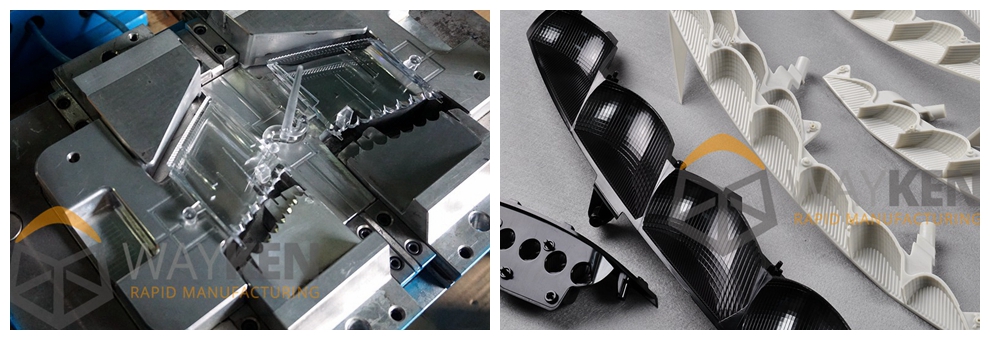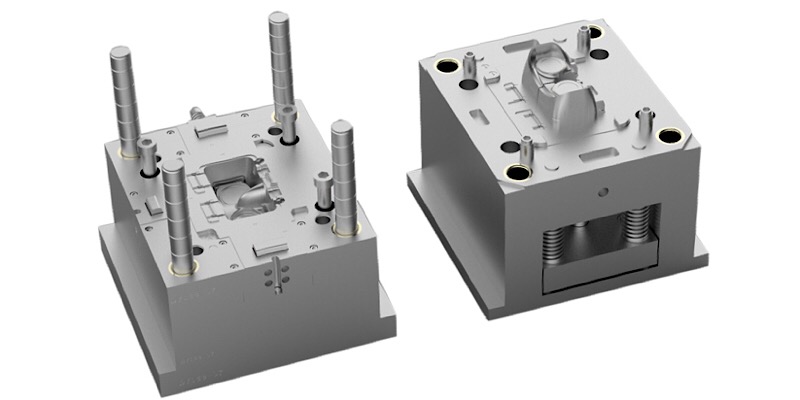Posted on: Sep 26, 2018, | By Candy, WayKen Marketing Manager
For a long time, manufacturers have always associated rapid tooling with mass production, steel machined durable press-forms, and considerable capital investments. And they ignore the fact that plastic injection molding is the ideal method for the production of a wide range of complex plastic components, and can benefit OEMs across many different industries. However, with the development of prototyping technologies, rapid injection molding has rightfully claimed its place among the foremost prototyping techniques.
What is Rapid Injection Molding?

Rapid injection molding process is technologically speaking the same as conventional injection molding. The main differences are in how the tooling is manufactured.
First, RIM uses different materials for its dies. In conventional processes, the aim is to make molds as durable as possible so they are manufactured from hardened steel that is a real hassle to the machine. Rapid injection molding is used for a smaller amount of runs so it can use softer materials. A widespread option is aircraft-grade aluminum alloys. They have a strength that is similar to steel but it is much easier to machine and polish them. That cuts the tooling time up to 30% in machining and up to 2-5 times in polishing.
Second, rapid injection molding dies can be redesigned easier. Molds for mass production injection molding are solid because fewer joints mean higher precision and longer life. Prototyping processes can sacrifice a little bit of precision to get better flexibility and that is why the cavity is manufactured as a separate part from the base of the dies. That way, if you need to make an adjustment, you can just remove the cavity and leave the rest untouched.
Third, rapid injection molding uses less automation than conventional rapid injection molding and that means it requires less time to design, manufacture, and fine-tune the tooling.
Conventional rapid injection molding processes use a lot of automotive ejectors, loads, and other auxiliary mechanisms to further increase their performance. However, prototyping is not about cutting time for each part produced, it is about cutting preparation time. So, if we replace automotive mechanisms with manually mounted ones, a lot of time can be saved when manufacturing the injection system.
All of the mentioned points result in the prototyping time being cut drastically. What it means for the client is that he can get his parts in 2-5 weeks with rapid injection molding instead of 2-5 months with conventional injection molding.
The Advantages of Rapid Injection Molding Offers for Prototype Manufacturing

Surely, even despite the modifications that have enabled RIM to be used for prototyping, making a mold is still a long and complex process. For example, 3D printing the part takes 2-5 days, not weeks. So why bother with Rapid Injection Molding?
Rapid injection molding processes offer a number of benefits not found in other prototyping techniques
1.Strength
With the design for manufacturability, which ensures optimum ejection angles and uniform wall thickness, the liquefied resin is injected into the cavity under high pressure. It ensures that the part has no pores and the quality of the final material is the best possible. Such things can’t be said about 3D-printing that uses powder or thin threads and sinters them together. As a result, the final material may have pores or unsintered regions.
2.Surface Finish
The surface finish of the molded part depends on the quality of the mold. The cavity is usually manufactured by CNC milling and then some finishing operations. The most widespread among them is polishing. In addition, EDM cutting is used to sharpen the inner corners of the cavity. The resulting surface finish can be as small as Ra 0.8 mcm.
3.Outstanding Precision
Injection Molding offers great precision compared to other prototyping techniques. For example, 3D printing will yield an IT9 at best while rapid injection molding is limited only by the mold precision, which can be as high as IT7.
4.Almost zero Material Waste
A lot of prototyping techniques don’t take materials into account at all. And that is okay when you are manufacturing single-digit batches. However, some products require extensive testing in live conditions. For example, medical prototypes, their last testing stage involves giving out the product to the consumers for everyday life tests. That means you’ll need hundreds or even thousands of samples and losing 50% of the blank material or more will cost you a considerable sum. Now, RIM injects only the required amount of plastic into the cavity, bringing the waste to a minimum.
5. The Mold Can Be Used for a Considerably Large Batch
Most prototyping processes excel at creating a small number of parts. For example, silicone casting is viable for up to 15 parts or so. After that, the casting form deteriorates too much and you need to manufacture another form. Rapid Injection molds are not as durable as conventional ones but they can still withstand many more runs than most prototyping processes. The best of them can create up to 100,000 parts before becoming too worn.
6.Universality
3D printing with a different plastic will require a considerable rehashing of the whole system. You’ll need to change the cartridge with the blank material and change a lot of settings to be able to print the same part from another plastic. In the worst case, you’ll need completely different equipment. When we talk about injection molding, that isn’t necessary. The mold is made of high-grade aluminum whose properties are much higher than that of any plastic. That is why you can basically use any material with the mold you’ve manufactured.
7.Efficiency
Prototyping techniques are not very effective if we compare them with mass production. A single part will be machined for a much longer time than the same part when it is mass-produced merely because of the fact that the blank is closer to the final part and there is less to the machine. In addition, the machining processes for mass production are optimized to minimize blank setup and trajectory. High processing time is okay when you make a small number of parts but the larger the batch, the more important it is to minimize the time required to produce a single part. RIM technologies have the shortest processing time among all the other prototyping techniques, so the larger your batch is, the more viable this technology becomes.
As an ISO 9001: 2005 Quality System certified supplier, we are confident we can meet your requirements, please feel free to submit your CAD files here or give us a call: +86 755 2373 1920





